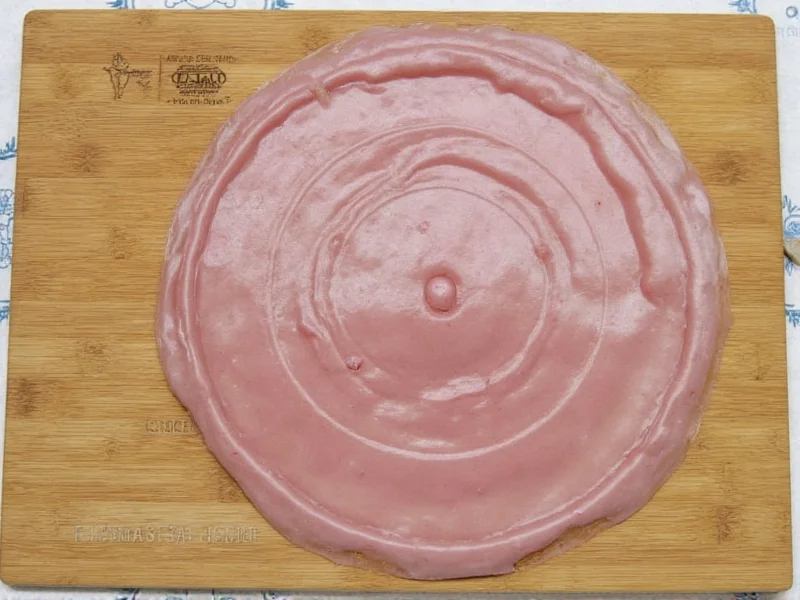Sous vide cooking revolutionizes precision in the kitchen by maintaining exact water temperatures throughout the cooking process. Unlike traditional methods where heat fluctuates, sous vide targets eliminate guesswork, ensuring proteins reach perfect doneness without overcooking. This technique works because food cannot exceed the water bath's temperature, creating foolproof results even for delicate items like eggs or fish.
Why Temperature Precision Matters in Sous Vide
The magic of sous vide lies in its scientific approach to cooking. When you set a specific target temperature, you're controlling the exact internal temperature your food will reach. This differs fundamentally from oven or stovetop cooking where surface temperatures far exceed internal temperatures. With sous vide targets, a 130°F (54°C) setting produces medium-rare steak consistently, every time—no thermometer required.
Comprehensive Sous Vide Target Temperature Guide
Understanding the right sous vide target for each food category transforms your cooking results. Below are scientifically validated temperature ranges for optimal texture and safety. Always consider your food's thickness when determining cooking duration.
| Food Type | Target Temperature Range | Doneness/Result | Minimum Cooking Time* |
|---|---|---|---|
| Beef Steak (1-1.5") | 120-134°F (49-57°C) | Rare to Medium | 1-2 hours |
| Pork Chop (1") | 135-145°F (57-63°C) | Medium to Well-Done | 1-1.5 hours |
| Chicken Breast (1") | 145-150°F (63-66°C) | Moist & Tender | 1-4 hours |
| Salmon Fillet (1") | 115-122°F (46-49°C) | Medium to Medium-Rare | 30-45 min |
| Eggs | 145-150°F (63-66°C) | Set White, Runny Yolk | 45-60 min |
| Carrots | 183°F (84°C) | Tender-Crisp | 30-45 min |
*Minimum times assume 1-1.5 inch thickness. Add 30 minutes per additional inch of thickness. Pasteurization times differ from minimum cooking times.
Adjusting Sous Vide Targets for Personal Preference
Your ideal sous vide target depends on several factors beyond basic food safety. Consider these variables when setting your parameters:
- Texture preferences: Lower temperatures yield more tender results for tough cuts like chuck roast (203°F/95°C for 24-48 hours)
- Food safety requirements: Immunocompromised individuals may prefer higher targets within safe ranges
- Post-sear considerations: Remember that searing adds 5-10°F internally—adjust targets accordingly
- Thickness impact: A 2-inch steak needs longer at target temperature than a 1-inch cut to ensure even cooking
Common Mistakes with Sous Vide Targets
Even experienced cooks make these errors when determining their sous vide cooking targets:
- Ignoring thickness: A 3-inch ribeye needs 3+ hours at target temperature, not the standard 1-2 hours for thinner cuts
- Misunderstanding pasteurization: Safety requires both temperature AND time—130°F (54°C) needs 2+ hours to pasteurize beef
- Overlooking carryover cooking: Food continues cooking after removal from water bath, especially thick items
- Using inaccurate equipment: Calibrate your immersion circulator monthly for precise temperature control
Equipment Considerations for Maintaining Targets
Accurate sous vide targets require reliable equipment. When selecting gear, prioritize:
- Immersion circulators with ±0.1°F accuracy for critical applications
- Containers with tight-fitting lids to minimize evaporation and temperature fluctuations
- Digital thermometers for periodic verification (don't rely solely on circulator readings)
- Proper water volume—at least 3 gallons for consistent temperature maintenance
Safety Guidelines for Sous Vide Targets
While sous vide is exceptionally safe when done correctly, follow these critical guidelines:
- Never cook chicken below 145°F (63°C) without extended pasteurization times
- Avoid the danger zone (40-140°F/4-60°C) for more than 2 hours with any protein
- When cooking for vulnerable populations, follow USDA guidelines strictly
- Always chill food rapidly after cooking if not serving immediately
Advanced Target Adjustments
Professional chefs use these sophisticated techniques to refine their sous vide targets:
- Multi-stage cooking: Start at lower temperature for tenderness, finish at higher for texture development
- Enzyme activation: Some proteins benefit from brief exposure to 113°F (45°C) to activate tenderizing enzymes
- Collagen conversion: Tough cuts require 160°F+ (71°C+) for extended periods to convert collagen to gelatin
- Flavor infusion: Lower temperatures (122°F/50°C) better preserve delicate herb flavors
Conclusion: Mastering Sous Vide Targets
Perfecting your sous vide targets transforms cooking from guesswork to precision science. Start with the recommended temperature ranges, then adjust based on your equipment, ingredients, and personal preferences. Remember that the ideal sous vide target balances food safety, texture, and flavor—and may differ slightly from standard recommendations based on your specific circumstances. With practice, you'll develop intuition for when to adjust targets for optimal results.
Frequently Asked Questions
What is the ideal sous vide target for medium-rare steak?
The ideal sous vide target for medium-rare steak is 129-134°F (54-57°C). At 129°F, you'll achieve a deep red center with slightly firmer texture than rare. At 134°F, the center becomes more pink with increased firmness while remaining juicy. Most chefs recommend 130-132°F as the sweet spot for balanced texture and color.
How do I adjust sous vide targets for thicker cuts of meat?
For each additional inch of thickness beyond 1.5", add 30-45 minutes to your cooking time at the same target temperature. A 2-inch steak needs approximately 2.5 hours at your chosen temperature, while a 3-inch tomahawk requires 3.5-4 hours. The temperature target remains the same—only the duration changes to ensure even heat penetration throughout the entire cut.
Can I use lower sous vide targets for pasteurization?
Yes, lower temperatures can achieve pasteurization with longer cooking times. For example, chicken reaches safe levels at 145°F (63°C) in 26 minutes, but would require 11 hours at 136°F (58°C). The USDA provides detailed time-temperature tables for sous vide pasteurization. Always verify with a reliable source before using extended low-temperature cooking for safety-critical applications.
Why does my sous vide chicken sometimes turn out rubbery?
Rubbery chicken typically results from cooking at too low a temperature for too long. Chicken breast needs 145-150°F (63-66°C) for optimal texture—below 140°F risks rubberiness. Also, exceeding 4 hours at proper temperatures can break down proteins excessively. For best results, cook chicken breast at 147°F (64°C) for 1.5-3 hours, then chill rapidly if not serving immediately.











 浙公网安备
33010002000092号
浙公网安备
33010002000092号 浙B2-20120091-4
浙B2-20120091-4